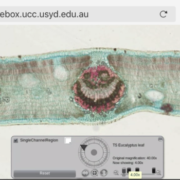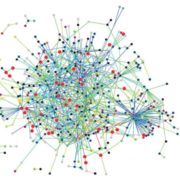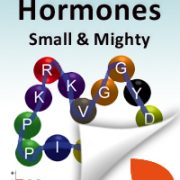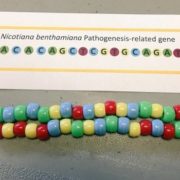Letter to the editor: Ready, primed, go: Ending the racism pandemic in science
This letter by Sona Pandey is the 2nd in our series on diversity, equity, and inclusion in STEM disciplines. Read the editorial call for letters here: Sowing the seeds of equity and diversity in academia and STEM disciplines.
Pandy, S. (2020). Ready, primed, go: Ending the racism pandemic in science. Plant Cell 32: 3660-3662 doi: 10.1105/tpc.20.00783.
In March 2020, the “normal” as we knew it, changed for us all. As we have struggled with lab closures, partial re-openings, new safety protocols, online teaching and mentoring, with endless Zoom meetings and wearing multiple hats at a time, another pandemic has come into focus. One that has existed all through history and remains uncured; the one that appears year after year, time after time and continues—the rampant racism. With each new publicized death, whether it is Michael Brown, Eric Garner, Tamir Rice, Freddie Gray, Breonna Taylor, or George Floyd (Ater, 2020; The Marshall Project, 2020), we start the conversation anew, and we hope that this may be the last time. Maybe this time we will change something; maybe this time it will be different. And then we forget all about it, and we become complacent, as it has not “directly” affected us. We get busy with our routine.
However, the involvement of the diverse sections of the society, including the scientists and educators in the events of the recent past, plus the initiative #ShutDownAcademia #ShutDownSTEM organized on June 10 (shutdownstem.com) and its widespread, global support has presented an opportunity, again, to reflect upon the issue of racism and change the system to make a difference. For racism is like a pandemic disease that has infected our society and is spread by unrecognized and unacknowledged beliefs and practices. None of us is immune from experiencing the effects of racism, but we need to learn to recognize the symptoms, remain vigilant, and fight it as we fight a health pandemic. We can all help in ending systemic racism by learning and reflecting on our individual roles in it, so that we can be part of stopping its spread. I surely hope that we as scientists can help pave the way for finding a cure for this pandemic.
In my research, I am interested in understanding how plants sense their environment and how they respond to it (Pandey, 2019). I believe these are also fundamental aspects of addressing racism; how we perceive racism and what we can do in response (Montgomery, 2020). As it often has been said, the first step to solve a problem is to acknowledge that the problem exists in the first place. We in science, technology, engineering, and mathematics (STEM) see ourselves as a diverse community. We think we are very comfortable around people of different races, nationalities, and cultures. In general, we want to think of ourselves as being open-minded and liberal; we are trained to respect different viewpoints. As biologists, we also know that diversity is good. In our opinion, we are the exact opposites of how we picture racist people. However, study after study has proved we all have our biases (DiAngelo, 2018; Eberhardt, 2019) and regardless of our awareness to it, we are a part of the problem. As humans, we will have our biases, and as responsible citizens of a civilized society, we need to acknowledge and fight them. We need to fight continuously, proactively, and mindfully.
In the past months, many of us in the United States have participated in equity, diversity, and inclusivity workshops; we have had book club discussions, implicit bias trainings, and other conversations around the topic of race and racism. After every such engagement, when I reflect upon it, a few thoughts come to mind. One, are we truly gaining anything from these discussions? Is it going to be another one of those meetings where we listen to someone’s experiences, share our own experiences, take tests to determine how biased we really are, and move on? Is it really that simple? For a non-White person like me (I am an Indian-American), it also brings out latent emotions. I wonder whether it is worth going through these experiences repeatedly. However, after I have had time to move my own emotions aside and think about these discussions objectively, I come to find them extremely helpful. Even though these workshops, book clubs, or conversations do not offer a solution, they sensitize us. We perceive things that we were completely oblivious to in the past. Sometimes it is painful, sometimes it is utterly shocking but at the end, we come out of it being more aware. In short, we can choose to acknowledge the problem proactively, that is, we can recognize the symptoms.
One point that has come into discussion many times is the “Black/White” issue. This is especially crucial to address because a large proportion of scientists do not identify with the Black or White race. So how do we see this and what is there for us in this discussion? I have heard various viewpoints that I discuss briefly herein, one by one. One of the most common is “as a non-White person, I am also a victim and no one talks about me; am I expected to address racism, when I am a victim myself”? The answer is yes. Racism is not restricted to one color combination, and there is no denying that non-Black people of color are victims of racism. However, our focus should not be on who is victimized more, but on how to stop it, and how to be anti-racist. Talking about even one aspect of racism is the first step in the right direction.
A somewhat related viewpoint is “I am in the USA for a short time, this is not a problem I have faced or will face in the future and thus it shouldn’t or doesn’t concern me.” This I find most disturbing. Even though racism in the context of skin color may not exist in some societies or countries in the same manner or with the same history as in the United States (Lepore, 2018; Mead, 2019), the basic principle behind it, that one human being is somehow inferior to another, is universal. Therefore, everyone, irrespective of skin color, nationality, gender, age, or career stage, should be a part of this discussion. Everyone should be sensitized to the basic principles of human dignity.
A third related viewpoint, although perhaps less prevalent, is “I feel discrimination from both White and Black people.” Again, there is no denying that. As has been seen in many studies on gender-based discrimination, both men and women show similar biases toward not hiring women (Moss-Racusin et al., 2012; José González et al., 2019; Eaton et al., 2020). Each one of us has to monitor our behavior and thought process, proactively, to ensure we are not a part of the problem.
Another aspect of discussions, workshops, and reflections on racism is how it can lead to “priming.” As we know from some excellent research in the field, plants deal with stress considerably more effectively if they have been previously exposed to the stress or are primed (Hilker and Schmülling, 2019). I feel that the continuing discussion about race primes us to deal with racism. This applies not only to the oblivious perpetrators but also to the bystanders and victims. Such priming may make the unaware perpetrators take pause and reassess their actions. Primed bystanders might be more aware of the acts of racism and be encouraged to act by not ignoring the issue as someone else’s problem.
Finally, in my opinion, it is important for Black scientists to be primed and prepared, so they do not pass off specific incidents as one odd occurrence or an individual’s quirky behavior. I acknowledge that the victims typically realize if a statement, behavior, or incident is racist toward them but are hesitant to respond to it fearing repercussions. This too needs to change. Although I do not want to put the onus on the victim to counter racism, I believe preparedness to counter such situations will be helpful. I am reminded of an incident where someone told me that “I was the enabler” for a particular inappropriate behavior, because I let that happen. Looking back, I might have said something had I been better prepared. To enable preparedness, we as individuals must work toward institutional and society-wide changes to build inclusive spaces that allow victims of racism to feel safe in reporting incidents of racism and receive assistance, just as we create the means for victims of a health pandemic to report symptoms and receive help and advice.
Although each one of us is responsible for being mindful of our individual behaviors and actions, changes implemented at the institutional levels are of paramount importance (Lepore, 2018; Asai, 2019, 2020; Kendi, 2019; Mead, 2019). Academic institutions, small and large businesses, government organization, professional societies and funding agencies, all need to make thoughtful changes that can demonstrate progress. Are we paying attention to representing racial diversity in our hiring committees and hires? Are we still hiring on the basis of “best fit”? Is our scientific advisory board diverse? Are our decision-making bodies diverse? What about the journal editorial boards, grant and manuscript reviewers, seminar speakers, keynote speakers in conferences?
And while addressing these questions, it is critically important that we do not do it just to check the appropriate box for “diversity and inclusion.” It is vital that the institutions commit resources toward this goal and create a nurturing environment for diverse people to succeed. Expecting years of feeling repercussions of discrimination to go away in an instant, just because someone has been “given” an opportunity is unrealistic. It will not bring the change we so desperately hope will happen. Similarly, people who are invested in working toward a more just society and work environment should be supported and acknowledged because each of these endeavors requires time, resources, and emotional energy.
As scientists, we have been trained to recognize, unabashedly, what we do not know or what are our weaknesses. We learn that it is through recognition that we also discover how to address those weaknesses and that it is never too late to learn new things. This is why I am hopeful for our future. We accept that our system is not perfect and there are problems. We must address these problems with the same diligence and rigor that defines our thought process in our research. That will certainly make a difference.
Principal Investigator and Associate Member, Donald Danforth Plant Science Center, St. Louis, Missouri
Member, EDI committee, ASPB
For correspondence: [email protected]
ACKNOWLEDGMENTS
I am thankful to my colleagues, lab members and friends with whom I have had multiple intense discussions related to race, racism and implicit bias. The research in my lab is supported by the National Science Foundation (MCB-1714693 and IOS-1557942 and EF URoL-1921724).
REFERENCES
Asai, D.J. (2019). To Learn Inclusion Skills, Make it Personal. Nature 565: 537.
Asai, D.J. (2020). Race Matters. Cell 181: 754-757.
Ater, R. (2020). In memorium: I can’t breath. https://www.reneeater.com/on-monuments-blog/tag/list+of+unarmed+black+people+killed+by+police.
DiAngelo, R. (2018). White Fragility: Why It’s So Hard for White People to Talk About Racism. (Boston: Beacon Press).
Eaton, A.A., Saunders, J.F., Jacobson, R.K., and West, K. (2020). How Gender and Race Stereotypes Impact the Advancement of Scholars in STEM: Professors’ Biased Evaluations of Physics and Biology Post-Doctoral Candidates. Sex Roles 82: 127-141.
Eberhardt, J.L. (2019). Biased: Uncovering the Hidden Prejudice That Shapes What We See, Think, and Do. (New York: Viking).
Hilker, M., and Schmülling, T. (2019). Stress priming, memory, and signalling in plants. Plant Cell & Environment 42, 753-761.
José González, M., Cortina, C., and Rodríguez, J. (2019). The Role of Gender Stereotypes in Hiring: A Field Experiment, (2018). . European Sociological Review 35, 187-204.
Kendi, I.X. (2019). How To Be An Antiracist. (New York: One World Press).
Lepore, J. (2018). These Truths: A history of the United States. (New York: W.W. Norton).
Mead, L.M. (2019). Burdens of Freedom: Cultural difference and American power. (new York: Encounter Books).
Montgomery, B.L. (2020). Planting Equity: Using What We Know to Cultivate Growth as a Plant Biology Community. The Plant Cell, tpc.00589.02020.
Moss-Racusin, C.A., Dovidio, J.F., Brescoll, V.L., Graham, M.J., and Handelsman, J. (2012). Science faculty’s subtle gender biases favor male students. Proceedings of the National Academy of Sciences 109, 16474-16479.
Pandey, S. (2019). Heterotrimeric G-Protein Signaling in Plants: Conserved and Novel Mechanisms. Annu Rev Plant Biol 70, 213-238.
The Marshall Project (2020). https://www.themarshallproject.org/records/141-unarmed-shooting








